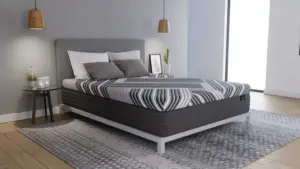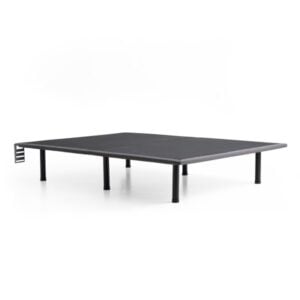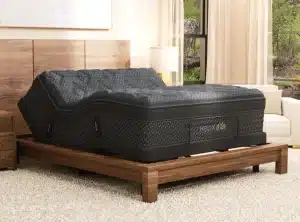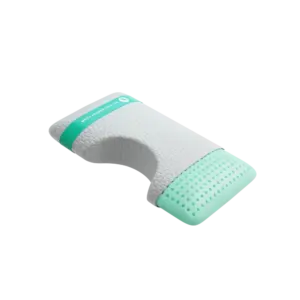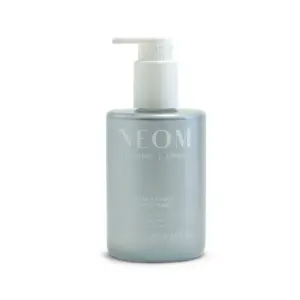Did you know that sleep apnea is the most common sleep disorder? Sleep apnea is more likely to happen as you get older, and the CDC estimates that it affects about 25 million Americans. The condition can be challenging to diagnose, but luckily there are a few different options for those who think they might have it. If your primary care physician cannot determine whether or not you have sleep apnea, going home for an at-home sleep study may be the best option for you.
You’re probably wondering how accurate at-home sleep studies are if you’re thinking about getting one. Can you get the same results from a sleep study done in your bed as you would from a hospital?
The answer is yes—home sleep studies are just as accurate as hospital sleep studies, and in some cases, they can be even more precise. That’s because you’re more likely to sleep better in your bed, and strangers are not monitoring you.
There are some things to keep in mind, though. If you have sleep apnea, you should always talk to your doctor before starting a home sleep study. And if you have other medical conditions, some risks are associated with doing a home sleep study.
Overall, though, an at-home sleep study is a convenient, comfortable way to get the information you need to diagnose and treat sleep disorders.
What is an at-home sleep study?
An at-home sleep study is a test done in the patient’s home rather than in a sleep laboratory. The patient uses portable sleep equipment, which is often smaller and more comfortable than what is used in a sleep lab. Home sleep studies are becoming more common because they are just as effective as lab-based studies but much more convenient.
Someone might want to have an at-home sleep study for various reasons. Maybe they have trouble sleeping in a strange place or want to avoid the cost and hassle of going to a sleep lab. Whatever the reason, at-home sleep studies are an excellent option for many people.
There are two main types of at-home sleep studies: diagnostic studies and titration studies.
Diagnostic studies are used to diagnose sleep disorders like obstructive sleep apnea (OSA).
Titration studies are used to find the correct dose of CPAP (continuous positive airway pressure) for people with OSA.
At-home sleep studies are usually done over one or two nights. The patient wears sensors on their body and uses a small machine to record their breathing, heart rate, and brain waves while they sleep. A sleep specialist then analyzes the data from the study to look for any signs of a sleep disorder.
If you think you might benefit from an at-home sleep study, talk to your doctor about whether it’s right for you.
Talk to Your Doctor About At-Home Sleep Tests.
If you think you may have obstructive sleep apnea, bring up the possibility of an at-home sleep test during your next doctor’s visit. Most primary care doctors refer people who might have sleep apnea to a qualified specialist (who determines what type of sleep testing is best for each patient).
How Many Times Can I Take an At-Home Sleep Apnea Test?
If you’re considering an at-home sleep apnea test, you may wonder how many times you can take the test. Several factors, including your health insurance coverage and doctor’s recommendation, determine the answer.
Health insurance coverage for at-home sleep apnea tests varies. Some insurance companies may cover the cost of the test once every two years, while others may only cover the price every five years. Give your insurance company a call to find out if they will cover the cost of an at-home sleep apnea test.
Your doctor may also recommend how often you should take an at-home sleep apnea test. If you have risk factors for sleep apnea, such as being overweight or having a family history of sleep apnea, your doctor may recommend that you take the test more often.
You can take an at-home sleep apnea test as often as your health insurance will cover it and as often as your doctor recommends it. If you have sleep apnea, taking the test more often than you need to won’t hurt you and will make sure you get the sleep apnea treatment you need.
What Sleep Disorders Can Home Tests Detect?
A variety of sleep disorders can be diagnosed with an at-home sleep study. The most common disorders include obstructive sleep apnea, restless legs syndrome, and insomnia.
During sleep, obstructive sleep apnea interrupts breathing. These can happen when the respiratory system gets blocked or when the muscles in the lungs are hard to control. Snoring, gasping for air while sleeping, and being tired during the day are all signs of obstructive sleep apnea.
Restless legs syndrome is a disorder that causes an irresistible urge to move the legs. This can be accompanied by a tingling or burning sensation in the legs. People with restless leg syndrome might find it difficult to fall and stay asleep.
Insomnia is a disorder characterized by difficulty falling asleep or staying asleep. Insomnia can be caused by stress, anxiety, medications, or other medical conditions. If you have insomnia, you might have trouble falling asleep, wake up often at night, and feel tired during the day.
Who Shouldn’t Take a Home Sleep Study?
An at-home sleep study is not suitable for everyone. Some people should not take a home sleep study. The following is a list of conditions in which it would not be appropriate for you to take a home sleep study:
- You have been told by a doctor that you have sleep apnea
- You have high blood pressure
- You have heart disease
How Accurate Are Home Sleep Apnea Tests?
An at-home sleep apnea test is a convenient and effective screening for this common sleep disorder. But how accurate are these tests?
There are two main at-home sleep apnea tests: The oximetry test and the flow sensor test.
Oximetry tests measure your blood oxygen levels overnight and can be done with a simple finger sensor that you wear while you sleep.
Flow sensor tests measure your breathing patterns overnight and require you to wear a small device around your neck.
Both at-home sleep apnea tests are highly accurate in diagnosing sleep apnea. Studies have shown that both tests are just as precise as traditional polysomnography (PSG) tests conducted in a hospital setting.
If you think you might have sleep apnea, an at-home sleep test is a great place to start. These tests are quick and easy to do, and they can give you peace of mind knowing that you’re getting an accurate diagnosis.
What happens during an at-home sleep study?
An at-home sleep study is a test used to diagnose sleep disorders. It is usually done for one or two nights. The test is conducted in the comfort of your home, making it more convenient than going to a hospital for a sleep study.
During an at-home sleep study, you will be asked to wear sensors that measure your body movements, heart rate, and breathing. You will also be asked to keep a sleep diary. The sensors and sleep diary will help your doctor determine if you have a sleep disorder.
What are the benefits of an at-home sleep study?
An at-home sleep study is a convenient, comfortable option for people who need to be assessed for sleep disorders. An at-home sleep study offers several benefits, which include the following:
- You can sleep in your bed. This means you’ll be more comfortable and likely to get a good night’s sleep, which is essential for an accurate sleep study.
- You’re in familiar surroundings. This can help you relax and feel more comfortable during the study, improving the results’ accuracy.
- It’s less disruptive to your life. You don’t need to take time off work or arrange childcare, and there’s no need to travel to a hospital or sleep clinic.
- It’s often more affordable than a hospital-based sleep study.
Pros and Cons of an at-home sleep study?
When deciding whether to do an at-home sleep study, it is crucial to consider its pros and cons. Some pros may include sleeping in your bed or familiar surroundings, which is often more affordable than a hospital-based sleep study. Some cons to an at-home sleep study include that you may not have the same level of supervision as you would in a hospital and that the sensors can be uncomfortable. In the end, you should consult your doctor before doing an at-home sleep study.
What do you need for an at-home sleep study?
You will need a few things for an at-home sleep study. Most importantly, you will need a comfortable place to sleep. This may be your bed, or if you are uncomfortable sleeping, you may consider renting a hospital bed. You will also need a quiet, dark room with comfortable sheets and blankets. You will also require monitoring equipment, which you can rent from a sleep center or doctor. The kit usually includes sensors that attach to your body and monitor your breathing, heart rate, and brain waves during sleep.
How do you prepare for an at-home sleep study?
It would be best if you did a few things to prepare for an at-home sleep study. Most importantly,
- Finding a comfortable place to sleep would be best. This could be your bed, or you may need to rent a hospital bed. You will also need a dark, quiet room and comfortable sheets and blankets. In addition, you will need to rent some monitoring equipment from a sleep center or sleep doctor. This equipment usually includes sensors that attach to your body and monitor your vital signs during sleep.
You will also need to keep a sleep diary for at least two weeks before the study. This diary will help the sleep doctor assess your symptoms and see whether or not you suffer from sleep problems. The diary should include information such as how many hours of sleep you get each night, what time you go to bed and wake up, and how many times you wake up during the night.
- It is also important to avoid caffeine and alcohol before the study. Caffeine can interfere with sleep and make it difficult to fall asleep. Alcohol can make it easier to fall asleep but can also cause disruptions in breathing during sleep.
Before the study, you should check with your doctor if you take any medications that could affect sleep, such as sedatives or stimulants. These medications may need to be tapered off or stopped entirely for the study to be accurate.
- Make sure the room is dark and relaxed so you can comfortably fall asleep. Consider using an eye mask or earplugs if needed.
- Follow the instructions provided by the company conducting the study carefully. This will ensure accurate results and minimize any discomfort during the test.
- Have someone else stay in the house with you during the study so they can help with any technical issues that may arise overnight.
- Relax and try to get a good night’s sleep! The most important part of an at-home sleep study is getting enough rest so that the results are accurate.
How to interpret the results of an at-home sleep study?
After completing your at-home sleep study, it is crucial to interpret the results to receive an accurate diagnosis of your sleep disorder. The first step is to review your sleep diary during the study. This will help your doctor determine if you had difficulty sleeping during the study. Next, your doctor will check the sensors you wore during the study. These sensors will measure your body movements, heart rate, and breathing. Based on these measurements, your doctor can determine if you have a sleep disorder.
What are the next steps after an at-home sleep study?
After an at-home sleep study, the following steps will depend on the diagnosis of your sleep disorder. If you have a sleep disorder, your doctor will likely prescribe treatment. The most common treatments for sleep disorders are lifestyle changes, such as changing your sleep habits or avoiding caffeine before bedtime. Your doctor may also prescribe medication to help you fall and stay asleep. If your doctor doesn’t treat you, they may send you to a sleep specialist for more testing.
Are there any risks associated with an at-home sleep study?
An at-home sleep study is a generally safe procedure with few risks. The most common chances are False Positives and False Negatives.
A false positive is when the sleep study results show a person has a sleep disorder when they do not. A false positive can occur if the sensors are not placed correctly on the body or if the person moves around a lot during the night.
A false negative is when the sleep study results show that a person does not have a sleep disorder when they do. This can happen if the person has no major sleep disorders or if the sensors do not pick up on any subtle changes in the body.
Other risks of an at-home sleep study are that the sensors could irritate the skin, make sleeping uncomfortable, or make it hard to keep track of all the data.
Overall, an at-home sleep study is a safe and convenient way to diagnose sleep disorders.
Conclusion
If you have signs of sleep apnea but your doctor can’t tell for sure if you have it, a sleep study might be the best thing to do. An at-home sleep study is the most convenient option, but it may not be as accurate as an in-lab sleep study. Following your doctor’s instructions is essential to getting the treatment you need if you’ve been diagnosed with sleep apnea.



